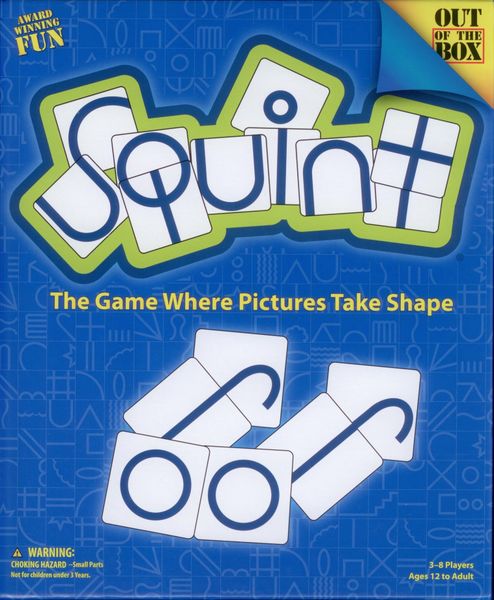Squint (2002) Board Game
Squint is a card game that was released in 2002 by Out of the Box Publishing. It was designed by Deborah Boss and features artwork by John Kovalic. The game is categorized as a party game and involves elements of line drawing and tile placement.
Game Components of Squint
How To Setup Squint
To set up Squint, spread out all the Shape Cards face up on the table so they are visible to all players. Choose a side of the cards in the tray to use and face it towards the front. Select a player to be the first builder and give them the card tray and the die. It is recommended to practice building a few pictures before starting the game if you are new to it.
Gameplay Mechanics and Game Objective
– Roll the die to determine which object to build.
– Draw the corresponding card and silently read the object.
– Use the Shape Cards to build the object within the time limit.
– Other players guess the object; correct guesses earn chips.
– Each player takes turns as the builder.
– The game ends after a set number of rounds (4 rounds for 3-4 players, 3 rounds for 5-6 players, 2 rounds for 7-8 players).
– The player with the most chips wins.
Player Experience
Squint is a game that encourages creativity and quick thinking. Players must work with limited and sometimes mismatched shapes to approximate an object, which can lead to humorous and unexpected interpretations. The time pressure adds an extra layer of challenge, making the game engaging and fast-paced. The game is designed to be light-hearted and enjoyable, rather than intensely competitive.
Pros
Cons
Personal Thoughts on Squint
Squint is ideal for groups looking for a fun, interactive, and creative game night experience. It is suitable for families and casual gatherings, as it does not require complex strategies or long-playing sessions. The game’s ability to balance creativity with time management makes it appealing to players who enjoy thinking on their feet and having a good laugh with friends. However, it may not be the best fit for those seeking a highly competitive or strategically deep game.
We are supported by our audience. When you purchase through links on our site, we may earn an affiliate commission, at no extra cost for you. Learn more.

